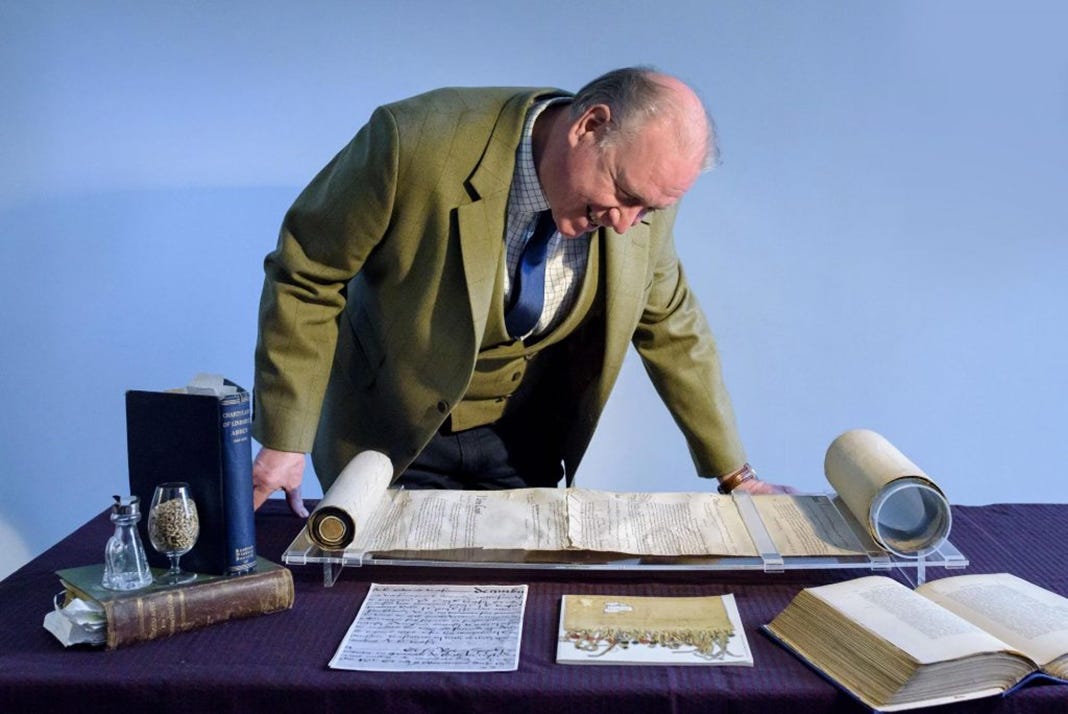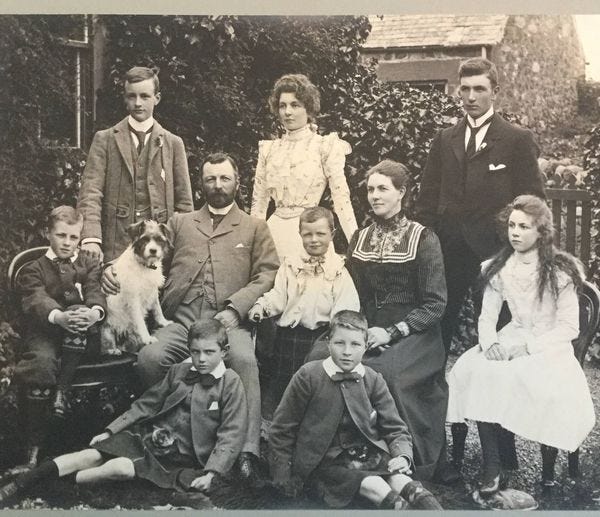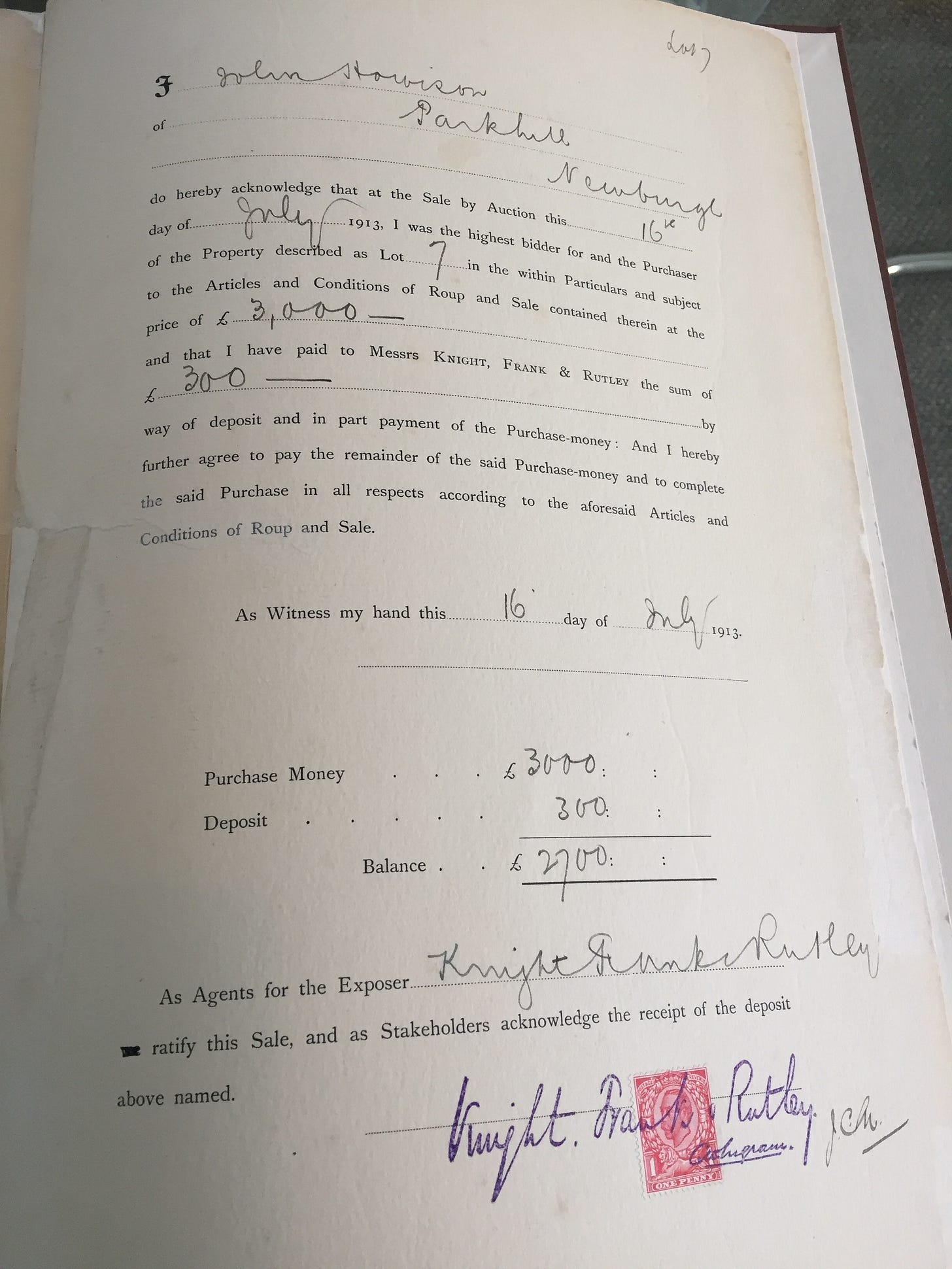In Conversation with Drew McKenzie Smith of Lindores Abbey (Part 1)
Part 1: from forgotten abbey to living distillery
Whisky lovers around the world know the oft-quoted line from the Exchequer Rolls of 1494: “eight bolls of malt to Friar John Cor, by order of the King, wherewith to make aqua vitae.”
For many, that single entry is the birth certificate of Scotch whisky. But what happens if you unknowingly happen to own the land tied to that story…and a visiting whisky writer knocks on your door to call it a “pilgrimage”?
That’s what happened to Drew McKenzie Smith, whose family has farmed the land around Lindores Abbey in Fife, Scotland (Lowlands region) for over a century. What was once just part of the farmyard is now home to Lindores Abbey Distillery, a modern operation built with the guidance of the late Dr Jim Swan.1
Vic and I wandered the ruins with Drew to talk about family history, the responsibility of reviving a sacred whisky site, and how he balanced deep heritage with serious modern whisky-making.
(What follows is a curated transcript of our conversation, lightly edited for clarity.)
From Farm to Distillery
Shelly: Drew, your family has owned Lindores Abbey Farm for generations. How did it go from being farmland to a working distillery?
Drew:
“When my great-grandfather bought Lindores in 1913, the abbey ruins were just part of the farm.2 We’ve got old black-and-white photos of horses grazing right next to the arches. Nobody really thought of it as anything more than a backdrop to daily life.
That changed in 2001. A man knocked on the door and asked my dad if he could walk around the abbey. Back then it was overgrown and unkempt, but Dad said, ‘Knock yourself out.’ The man walked around quietly for a while and then just left.
Months later, a book arrived in the post: Scotland and its Whiskies by Michael Jackson.3 Inside, he’d written, thank you, turn to page 127.
There was a photo of the abbey, and the words: for the whisky lover, it is a pilgrimage.
We had no idea who Michael Jackson was at the time, but suddenly this farmyard ruin was being declared a place of pilgrimage for whisky lovers. That moment was the spark. Without it, I don’t think Lindores would ever have become a distillery.”
Friar John Cor and the Exchequer Roll
Vic: The Friar John Cor reference is famous, but also debated. What’s your take on it?
Drew:
“It’s one of those mysteries that will never have a definitive answer. The Exchequer Roll from 1494 doesn’t say ‘Lindores Abbey’; it says Friar John Cor, and it sits in the Fife section of the document. There’s no smoking gun, but there’s a strong circumstantial case.
I’ve seen the original scroll myself. It’s huge, written in Latin, very faded, with bits damaged by time. But the line is there—malt delivered to Friar John Cor for aqua vitae. Standing in front of that, knowing it connects this ground to the earliest written record of whisky, was extraordinary.
So yes, it’s debated. But without that reference—and without Michael Jackson calling this a pilgrimage—there would almost certainly be no distillery here today.”
Taking It Seriously
Shelly: Once you decided to build a distillery, how did you know what direction to take?
Drew:
“One of the very first conversations I had with Dr Jim Swan was about whether Lindores would be a serious whisky distillery, or just a gimmick. It would have been easy to churn out a tourist attraction: monk-shaped bottles, cheap blends, a bit of tartan and folklore. But that would have betrayed the history.
Jim and I agreed right away: if we were going to do this, the whisky had to be world-class. The story and the setting might draw people in, but the spirit itself had to stand on its own.”4
The Influence of Dr Jim Swan
Vic: Tell us a bit more about Dr Jim Swan’s role.
Drew:
“Jim was central to everything. From the earliest days, he was advising on still design, spirit style, and cask selection. He was always thinking about how we could maximise copper contact, how the distillery could have its own DNA.
He’s the one who convinced me to install two spirit stills instead of one. He’d shown me spirit from Annandale where smaller stills created more copper contact, and he was right; it gave us a brighter, cleaner new make.
That decision shaped Lindores’ character. When our new make won Best New Make Spirit at the World Whisky Awards, it confirmed what Jim had always said: get the DNA right, and everything else can follow.
For me, the new make is the distillery’s soul. If that isn’t right, then it doesn’t matter what casks you use; you’re building on sand. Jim drilled that into us.”
Balancing Heritage and Modern Whisky
Shelly: You’ve got this incredible historical backdrop, but also a working modern distillery. How do you balance those two identities?
Drew:
“It’s definitely a balancing act. On the one hand, you’ve got visitors who come here because of the story—because Michael Jackson called it a pilgrimage, or because of Friar John Cor. On the other, you’ve got whisky fans who want to taste the spirit, understand the production, and know it’s not just smoke and mirrors.
That’s why we run both history tours and whisky tours. Some people come for the abbey itself; some come for the whisky. Most want both.
The strapline—for the whisky lover, it is a pilgrimage—was a gift from Michael Jackson, and we use it proudly. But in the end, the only thing that will make people come back year after year is the quality of the whisky. That’s what justifies the history.”
Closing Thoughts
Lindores Abbey is more than just picturesque ruins on the River Tay. It’s the place where whisky’s written history begins, and—thanks to Drew McKenzie Smith and the guidance of Dr Jim Swan—it’s once again a place where spirit flows.
The Lindores story looks back to 1494, yes, and it takes that legacy seriously, resisting the easy gimmicks, to produce whisky worthy of the ground it comes from.
For anyone who loves whisky, Michael Jackson was right: Lindores is a pilgrimage.
And for an added plus, a personal anecdote:
I purchased a bottle of the Distillery Exclusive Batch, Chapter 1 during our visit. A couple of weeks later, I brought the expression to the King George V Malt Whisky Society for a blind tasting, where it earned one of our highest scores of the year. If you have the pleasure of visiting Lindores Abbey, be sure to grab a bottle (or two).
A little reminder:
Interviews and culture spotlights will become an exclusive feature in paid subscriptions come October. If you’re enjoying them, we’d love for you to upgrade to paid and join us for weekly conversations with whisky personalities!
Dr Jim Swan (1941–2017, PhD in chemistry) was a pioneering whisky consultant, often called “the Einstein of whisky.” He advised distilleries worldwide on flavour, maturation, and cask management, and was instrumental in the success of Kavalan, Penderyn, Annandale, Cotswolds, and Lindores Abbey.
Drew’s great-grandfather was named John Howison. According to the purchase document pictured, the farm was bought for £3,000 on the 16th of July 1913.
Michael Jackson (1942–2007) was a world-renowned drinks writer (not the pop star). Known as “the Whisky Chaser,” he was the most influential whisky and beer author of his generation, whose books and tasting notes helped shape modern whisky appreciation.
They didn’t step too far away from nods to heritage, though. The Lindores Abbey bottles are designed to echo the stone columns of the abbey ruins. Their rounded, fluted shape reflects the surviving medieval architecture, chosen deliberately instead of gimmicky monk-shaped bottles and linking each release to genuine heritage rather than tourist pastiche.










